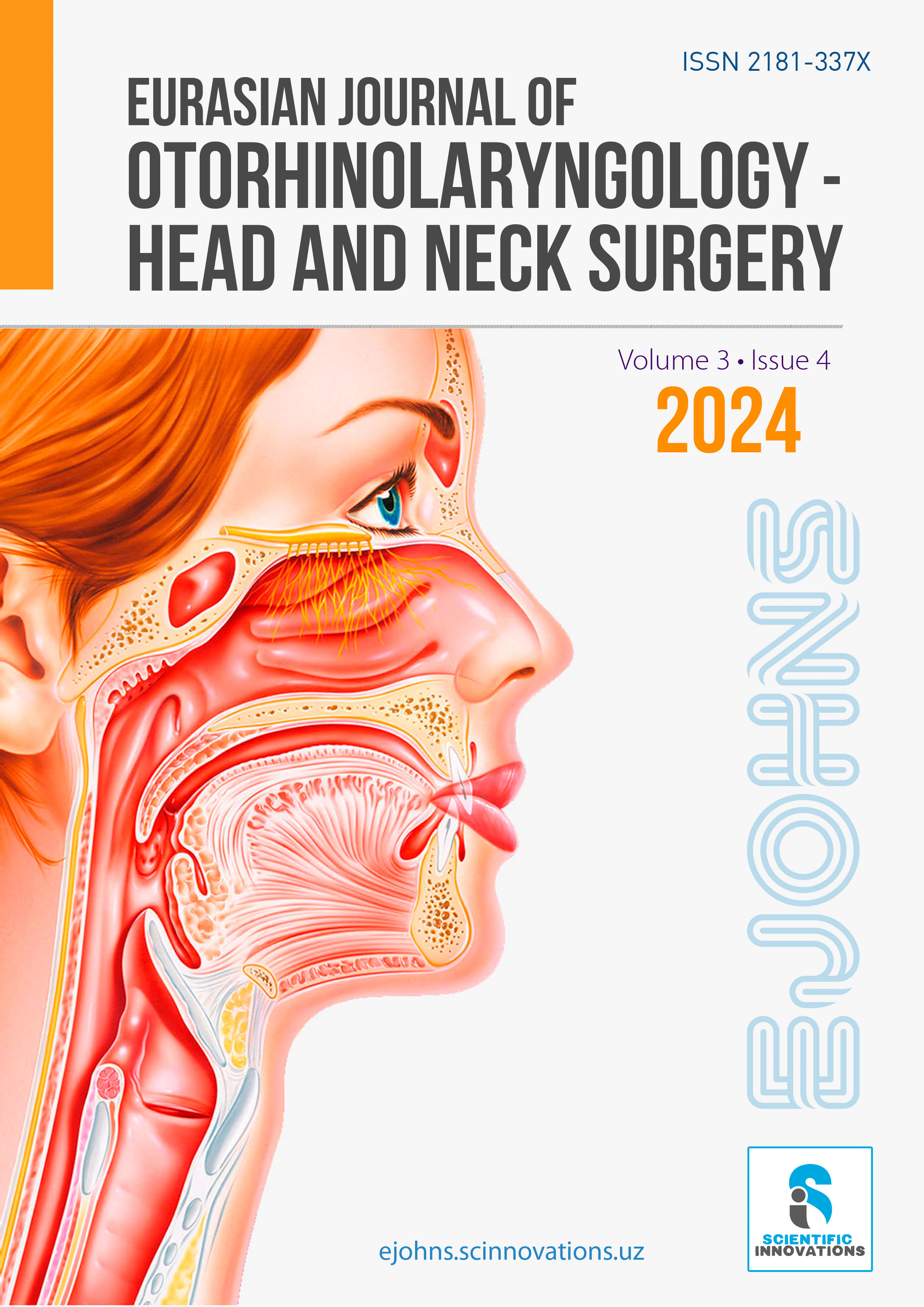Modern views on the etiopathogenesis of paratonsillar abscess
DOI:
https://doi.org/10.57231/j.ejohns.2024.3.4.024Keywords:
peritonsillar abscess, etiology, pathogenesis, inflammation, immunologyAbstract
Infectious and inflammatory diseases of ENT organs still remain the most common pathological processes, characterized by a persistent course, despite significant advances in modern clinical medicine. The purpose of this review is to study modern views on the etiopathogenesis of peritonsillar abscess. The review material included scientific publications over the past 10 years, published in the international databases E-library, Scopus and Web of Science. Thus, it follows that the study of issues of modern views on the etiopathogenesis of peritonsillar abscess is relevant and diverse, in this regard, for the diagnosis and development of treatment for this disease, it is necessary to take into account development factors.
References
Кадач О. О., Сак Н. В. Эпидемиология паратонзиллярного абсцесса //Сборник материалов республиканской научно-практической конференции студентов и молодых ученых, посвященной 95-летию со дня рождения профессора Маслакова Дмитрия Андреевича. – 2022. – С. 361-362.
Кузнецова Н. Е., Вешкурцева И. М. Распространенность паратонзиллярных абсцессов у детей Тюменского региона //Медицинский совет. – 2023. – Т. 17. – №. 1. – С. 160-165.
Пискунов В. С. Стадии и особенности лечения паратонзиллярного абсцесса //Региональный вестник. – 2019. – №. 21. – С. 20-21.
Сергеева С. Г. К вопросу о распространенность паратонзиллярных абсцессов по данным взрослого оториноларингологического отделения областной клинической больницы№ 2 г. Тюмени //Неделя молодежной науки-2023. – 2023. – С. 319-319.
Стагниева И. В. и др. Распространенность паратонзиллярных абсцессов у детей //Российская оториноларингология. – 2019. – Т. 18. – №. 3 (100). – С. 54-58.
Ali S. A. et al. Predictors of intratonsillar versus peritonsillar abscess: a case‐control series //The Laryngoscope. – 2019. – Т. 129. – №. 6. – С. 1354-1359.
Bella Z. et al. Peritonsillar abscess: an 8-year retrospective, culture based evaluation of 208 cases //Journal of Medical Microbiology. – 2022. – Т. 71. – №. 9. – С. 001576.
Cidlinsky N. et al. Therapeutic management of peritonsillar abscess during COVID-19 //European Archives of Oto-Rhino-Laryngology. – 2024. – Т. 281. – №. 11. – С. 5915-5922.
Long B., Gottlieb M. Managing peritonsillar abscess //Annals of Emergency Medicine. – 2023. – Т. 82. – №. 1. – С. 101-107.
Saar M. et al. Unveiling the etiology of peritonsillar abscess using next generation sequencing //Annals of Clinical Microbiology and Antimicrobials. – 2023. – Т. 22. – №. 1. – С. 98.
Seyhun N. et al. Epidemiology and clinical features of peritonsillar abscess: Is it related to seasonal variations? //Turkish Archives of Otorhinolaryngology. – 2018. – Т. 56. – №. 4. – С. 221.
Slouka D. et al. Epidemiological and microbiological aspects of the peritonsillar abscess //International Journal of Environmental Research and Public Health. – 2020. – Т. 17. – №. 11. – С. 4020.
Tsai Y. W., Liu Y. H., Su H. H. Bacteriology of peritonsillar abscess: the changing trend and predisposing factors //Brazilian journal of otorhinolaryngology. – 2018. – Т. 84. – С. 532-539.





